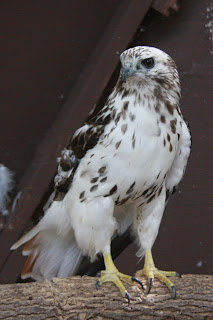As show supervisor for
World Bird Sanctuary’s zoo shows I enjoy a transient lifestyle. I’ve mentioned before how the
ever-changing scenery and people keep me on my toes and free of boredom. This is true but there is one thing I
don’t enjoy about constantly being on the move—Packing!
Time to pack the
car (photo: Neal Cowan)
I hate packing. I loathe packing. It doesn’t help that I’m not
particularly good at it. I’m great
at gathering things, checking and double checking a list, and sorting. I’m not so good at the actual
packing…or moving. Putting things in boxes, carrying them around, making them
fit in a car. All of it is not
fun.
Not only do I have to pack
all of my own things, but I also have to pack for the birds and the show. Both zoos we frequent allow us to leave
items in storage, but we still cart the majority of our supplies back and
forth. It is important to make
sure we have everything we need, as there are very few opportunities to bring
the missing items to us from St. Louis. That is a lot of pressure when packing,
which makes it even less fun.
So much “stuff” and
I’ve only just begun (photo: Leah Tyndall)
I will admit there have
been occasions, when I am very tired, that I’ve pondered the possibility of
training birds to pack for themselves--not that they have a whole lot of
experience when it comes to packing.
Well Sherlock the African Pied Crow will pile his toys in his crate, but
that’s about it.
Hmmm…do you
think? Uh….no, I guess not!
(photo: Mike Cerutti)
In the wild, birds don’t
have to pack up and move their things from one nest to another. In most cases they build their nest
from scratch. In some cases they
don’t even build the nest. Owls
for instance build a scrape. This
is a depression either in the ground or in a tree cavity. They usually line these with feathers
before laying their eggs.
Abandoned nests will often be used by different birds, even different
species. It is not uncommon for
Great Horned Owls to take over abandoned Red-tailed Hawk nests. On occasion they don’t even wait for
the nests to be abandoned.
Brood parasites are a
group of birds including European cuckoos and
cowbirds. These birds will lay
their eggs in another bird’s nest.
Not only do they not have to raise their own young, but they also do not
have to expend the energy to build a nest in the first place. Bald Eagles are the closest to being
movers, although they don’t move between nests as much as they build onto their
existing nest. Bald Eagles will
return to the same nest year after year, adding more and more sticks. The largest Bald Eagle nest ever
recorded was nine and a half feet wide, twenty feet deep, and weighed over
three tons before it broke the tree in which it was built. That weighs more
than my car--my car being a RAV 4, so I can pack all of my stuff or fit an
eagle size crate in it!
Zoo show life is
fantastic, except for moving myself, and 15-20 birds and all of their items,
across the country. In the wild
birds do not need to move anything but themselves from one place to
another. In some cases they do not
even need to build a nest in the first place. If only moving zoo shows were that simple…and don’t even get me started on unpacking!
And just about the time I
have reached the point of exhaustion and am throwing myself a real pity party,
I am reminded why we at zoo shows do all this packing, unpacking and moving of
personal items, equipment and birds.
The first time a bird swoops over the heads of audience members and we
hear the gasps of amazement from a theater full of adults and children we know
that “OH YEAH…that’s why we do it!”
So, if you happen to be in
the Milwaukee area this summer, be sure to make the Milwaukee County Zoo one of
your stops. Our amazing birds will
demonstrate for you why all that furious packing and transporting was well
worth the effort.
Submitted by Leah Tyndall,
World Bird Sanctuary Naturalist/Trainer and Zoo Show Supervisor.

















.jpg)













%2B(CS).JPG)
%2B(CS).jpg)
.JPG)
